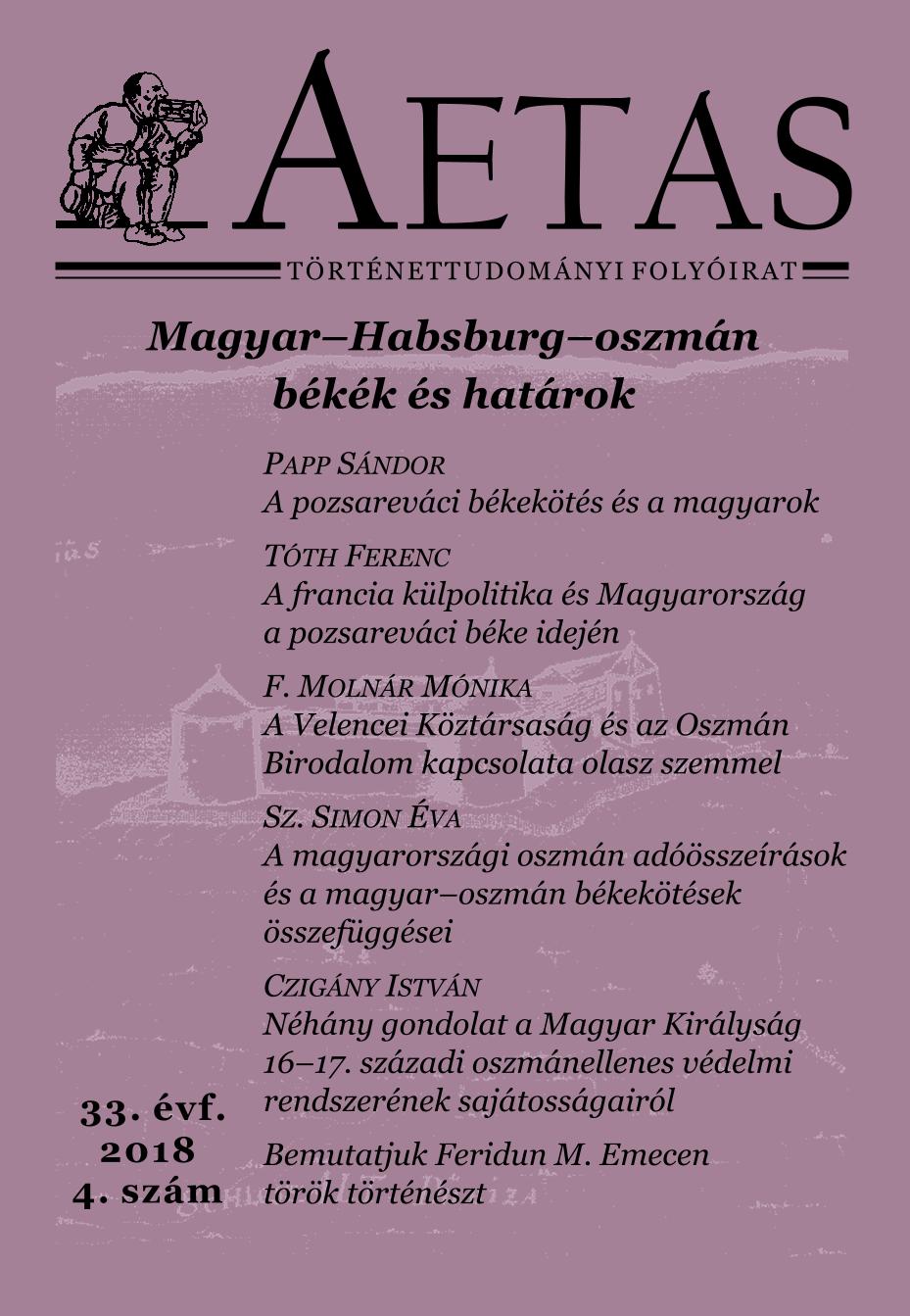A szülejmáni béke. A magyarországi oszmán adóösszeírások és a magyar– oszmán békekötések összefüggései
Suleiman’s peace. The connection between Ottoman–Hungarian peace treaties and Ottoman tax censuses in Hungary
Author(s): Éva Sz. SimonSubject(s): 16th Century, 17th Century
Published by: AETAS Könyv- és Lapkiadó Egyesület
Keywords: Kingdom of Hungary; Ottoman Empire; borders;
Summary/Abstract: Starting from the second half of the 15th century, the Kingdom of Hungary and the Ottoman Empire were separated by the natural border of the rivers Sava and lower Danube, fortified with border castles. With the capture of Belgrade, Zemun, and Sabac, the army of Suleiman I punched through this functional, formally established defense line, which led to the creation of the 150-year-long Ottoman rule in Hungary. During the more than 150 years following the Hungarian-Ottoman peace treaty of 1519, the Kingdom of Hungary, the Habsburg Monarchy and the Ottoman Empire came to a peace agreement fourteen times. However, while the treaties of 1503 and 1519 specifically established the border settlements on the Sava-lower Danube line, as did the double committee sent out after the Treaty of Karlowitz in 1699, the treaties between these never specified border castles or specific border marks. In the 16th century, on the western border of the Ottoman Empire the Ottomans used a unique, one might say genius method not used in other parts of the Empire to legitimize their rule in a region even before conquering it by force. They did not only utilize their army, but their diplomacy and administration as well, to subjugate these regions. The author of this study examines the correlations between the Ottoman-Hungarian peace treaties and the sanjak censuses appraising the taxability of the population, as well as their roles in the border negotiations. Furthermore, the study puts the findings of previous studies regarding the making of sanjak censuses in a broader context and provides a new foundation for these findings.
Journal: AETAS - Történettudományi folyóirat
- Issue Year: 2018
- Issue No: 4
- Page Range: 53-72
- Page Count: 20
- Language: Hungarian

